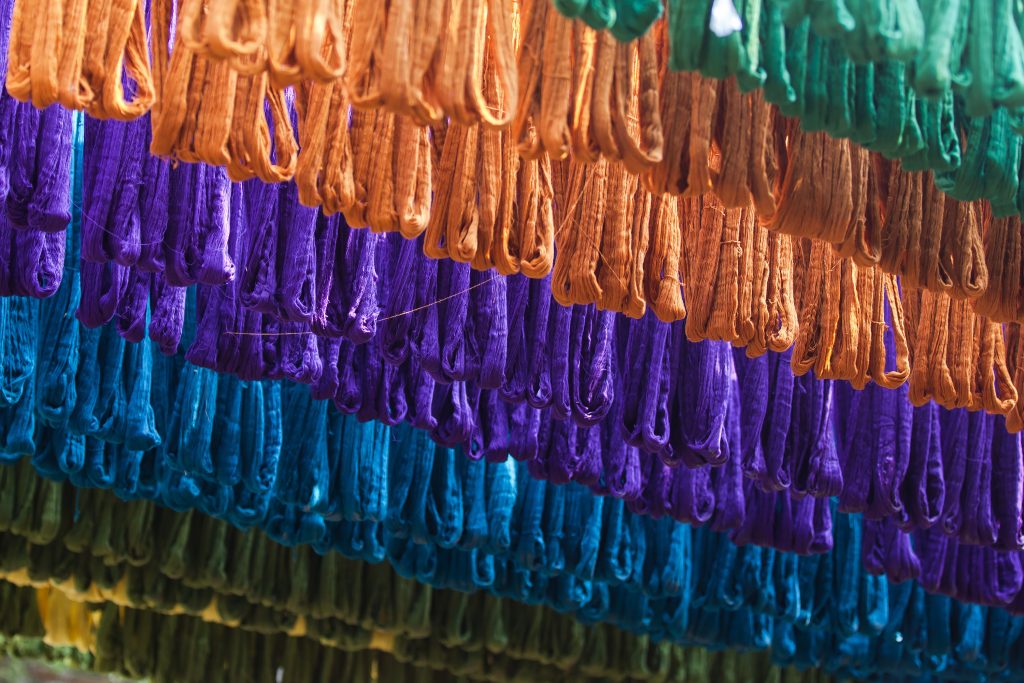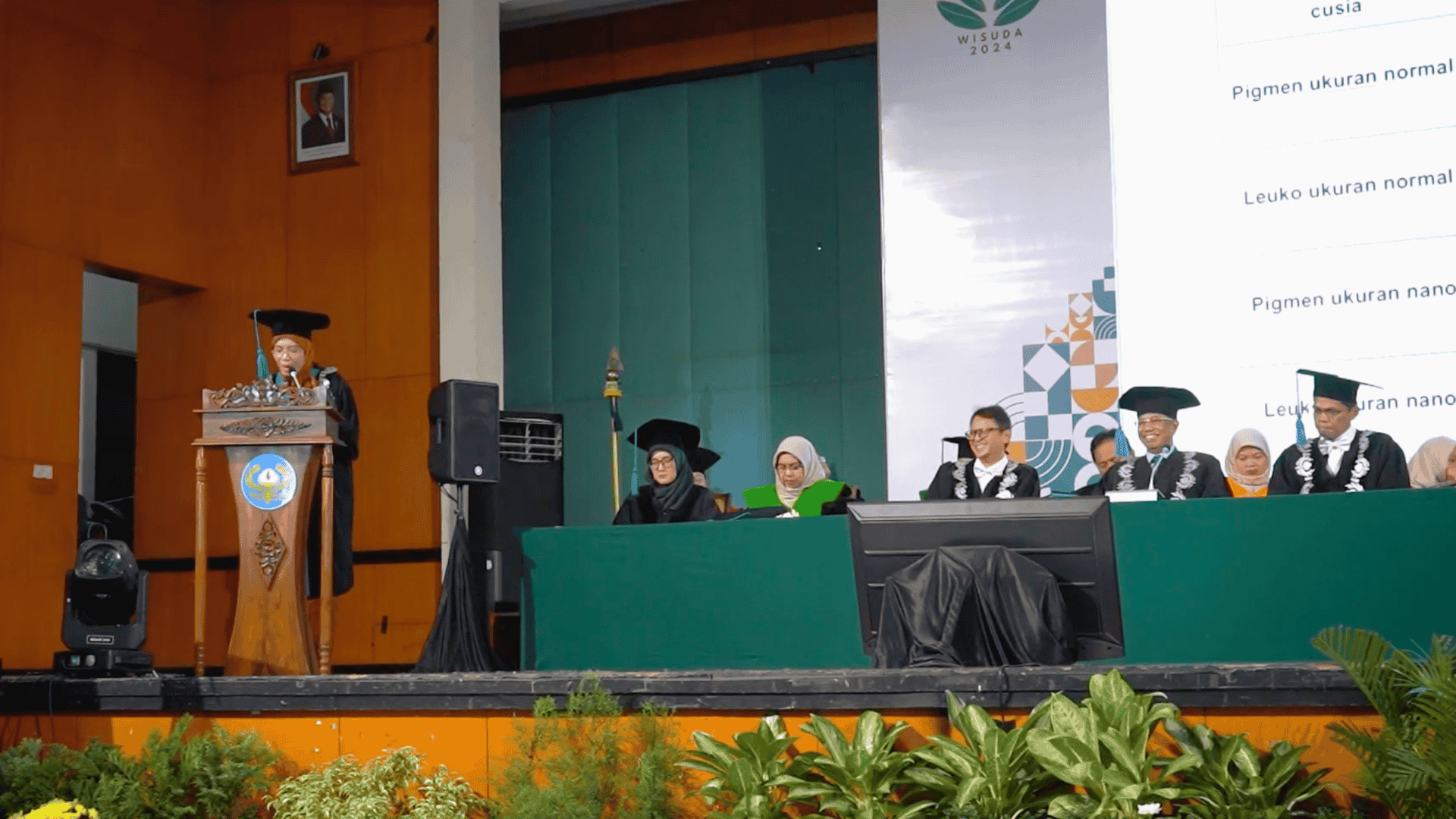The global textile industry, a vibrant and essential sector, faces an urgent environmental crisis, with textile dyeing processes identified as significant contributors to pollution and resource depletion. In response to this pressing challenge and a growing global demand for sustainable products, pioneering research in Indonesia is focusing on transformative technologies: waterless supercritical carbon dioxide (sc-CO2) dyeing and the development of nano-sized natural dyes. This dual approach aims to revolutionize the industry, reduce its ecological footprint, and enhance Indonesia’s competitive edge in the global market.
Meet Prof. Ida Nuramdhani
At the forefront of this green revolution is Professor Ida Nuramdhani, a distinguished academic at Politeknik STTT Bandung. Her appointment as a Full Professor in Textile Chemistry, with expertise in Dyeing Technology and Textile Nanotechnology, on September 1, 2024, culminated a dedicated academic and career journey spanning 22 years and 9 months. Professor Nuramdhani’s passion for dye chemistry and dyeing technology began during her student days at Politeknik STTT Bandung, and she has consistently aimed to contribute her expertise to developing innovative, eco-friendly, and sustainable dyeing technologies for the benefit of humanity and the advancement of Indonesia’s national textile industry. Her inaugural scientific oration, titled “From Innovation to Transformation: Waterless Supercritical Dyeing Technology and Nano-sized Natural Dyes for Sustainable Textiles and National Advancement,” encapsulates the core of this impactful research.
This article highlights the summary of her scientific oration during her Professorship Inauguration, on Waterless Dyeing with Supercritical CO2 and Natural Nanodyes.

The Environmental Burden of Traditional Dyeing
Conventional textile dyeing processes are notoriously resource-intensive and polluting. They rely heavily on water, with a single batch of polyester fabric potentially consuming nearly 9,600 liters of water. This leads to:
- Massive wastewater generation laden with hazardous chemicals and dyes, which contaminates aquatic ecosystems and poses risks to public health. The World Bank reports that the textile industry accounts for approximately 20% of global industrial wastewater.
- Significant energy consumption for heating and drying processes.
- Reliance on synthetic chemicals that are often toxic and difficult to treat.
- High carbon footprint, with the textile industry contributing about 10% of global carbon emissions.
In Indonesia, rivers like Citarum are heavily polluted by textile effluent, and data from Greenpeace indicates that 68% of rivers in West Java receiving textile waste exceed safe chemical limits. Global initiatives like Zero Discharge of Hazardous Chemicals (ZDHC) and the EU Green Deal are compelling industries worldwide to adopt sustainable practices, making it imperative for Indonesia to adapt and innovate. The Indonesian government has also committed to sustainability through policies like carbon emission reduction targets and the Green Industry Standard for textile finishing.
Solution 1: Waterless Supercritical CO2 Dyeing
Supercritical carbon dioxide (sc-CO2) dyeing offers a revolutionary alternative to traditional water-based methods. First introduced in the 1990s by Knittel and Schollmeyer from the German Textile Research Center, this technology has matured, with companies like Dyecoo successfully implementing it on an industrial scale worldwide since 2008.
Key advantages of sc-CO2 dyeing:
- Eliminates water use as the dyeing medium, addressing issues of limited clean water availability.
- Utilizes non-toxic and recyclable sc-CO2, drastically reducing liquid waste and the need for special treatment.
- Requires no auxiliary chemicals other than the dye itself.
- Removes the need for washing, rinsing, and drying processes, saving significant energy and time.
- Does not produce any wastewater from the dyeing process.
- Can be completed much faster than conventional dyeing due to sc-CO2’s low viscosity.
How it works: sc-CO2 is often called a “fourth phase” of matter, existing above its critical temperature and pressure, exhibiting properties of both a gas and a liquid. It can penetrate fiber structures easily due to its low viscosity. For polyester, sc-CO2 acts as both a solvent and a carrier, swelling the fibers and allowing disperse dyes to diffuse efficiently into the amorphous regions. This eliminates the need for dispersing agents and subsequent reduction clearing, common in conventional polyester dyeing. While highly effective for synthetic fibers like polyester, nylon, and polypropylene, its application to cellulose fibers (like cotton) remains a significant challenge due to differences in polarity and interaction mechanisms.
Indonesia’s Contribution: EcoDye 1.0 and EcoDye 2.0 Recognizing the strategic importance of mastering this advanced technology for national competitiveness and self-reliance, researchers at Politeknik STTT Bandung initiated a special master’s course in “Waterless Dyeing with Supercritical Carbon Dioxide” in 2019. Their efforts have led to the development of the first sc-CO2 dyeing machines in Indonesia:
- EcoDye 1.0: Developed in 2022, this laboratory-scale unit has a volume capacity of 498.32 cm³ and is used for education, research, and industrial trials.
- EcoDye 2.0: Built in 2024 with improved specifications, including an increased capacity of 8,000 ml (from 498 ml), an integrated stirring and heating system within the high-pressure dyeing tube (eliminating the need for glycerin as a heating medium and thus waste), and the ability to dye yarn in cones weighing up to 1 kg.
Initial research results from these machines show promising outcomes, with dyed samples demonstrating high colorfastness values (4/5 to 5) and even a slight increase in UPF (Ultraviolet Protection Factor) when simultaneously treated with titanium dioxide nanoparticles.
Solution 2: Nano-sized Natural Dyes
Another approach to sustainable dyeing involves harnessing the power of natural materials, a trend driven by the demand for renewable and biodegradable products and a reduction in reliance on synthetic chemicals. While natural dyes offer unique aesthetics and can provide additional functionalities like anti-bacterial properties, they often suffer from lower colorfastness compared to synthetic dyes. This limitation is being addressed through nanotechnology, by developing natural dyes at the nanoscale (1-100 nm).
Benefits of nano-sized natural dyes:
- Enhanced properties: Nano-sizing significantly alters physical and chemical properties, increasing surface area, solubility, and interaction with substrates.
- Improved dyeing quality: Leads to more uniform color distribution and penetration into fibers.
- Better colorfastness: Improves the dye’s interaction with the fabric, resulting in higher resistance to washing and rubbing.
- Enhanced functionality: Can boost inherent properties like anti-bacterial activity.
While natural dyes typically work best on natural fibers like cotton, silk, and wool, nano-sizing can broaden their applicability, potentially even to synthetic fibers like polyamide.
Research examples from Indonesia’s Politeknik STTT Bandung team:
- Nano-Eucalyptus globulus extract: The research successfully created nano-sized particles (ranging from 22.84 – 83.95 nm depending on the process) from Eucalyptus leaves. When used to dye cotton with mordants, the resulting fabric showed exceptionally high colorfastness to washing and rubbing (4/5 to 5), a significant improvement over typical natural dyes (which range from 3 to 3/4). Furthermore, these fabrics exhibited excellent anti-bacterial properties, with inhibition zones consistently above 20-30 mm, even after multiple washes. This demonstrates that nano-sized natural materials can enhance dyeing properties and provide effective anti-bacterial functions simultaneously.
Nano-indigo from Strobilanthes cusia: The research team also explored creating nano-indigo from natural indigo paste, a more challenging material due to its high agglomeration potential. Although the smallest size achieved so far is 210 nm, the nano-indigo dyeing process proved significantly more efficient, saving 80% of dye compared to normal-sized indigo paste. Interestingly, preliminary studies on dyeing polyester with nano-indigo pigments demonstrated better coloring compared to normal pigments, suggesting enhanced diffusion due to smaller particle size. Even more surprisingly, nano-leuco indigo showed the best absorption on both cotton and polyester.
Towards a Sustainable Future and National Advancement
These research breakthroughs represent a significant step towards sustainable practices for Indonesia’s textile industry. By minimizing water use, drastically reducing liquid waste, lowering chemical consumption, and supporting the circular economy, these technologies align with Indonesia’s environmental goals and global sustainability standards.
While the adoption of new technologies presents challenges, including knowledge transfer, mindset shifts, and significant investment, the journey must begin. The EcoDye machines are positioned as pioneers, facilitating technology transfer through education, research, and collaboration between industry, researchers, and innovators in Indonesia. This initiative aims to establish Indonesia as a center for eco-friendly dyeing studies.
From a scientific standpoint, this research contributes to green chemistry and material science, demonstrating how alternative solvents and nano-materials can replace resource-intensive traditional methods. Although natural dyes may not yet match the full color range, brightness, and productivity of synthetic dyes for large-scale industrial use, their initial application in small and medium-sized industries (IKM) or for specialized products holds immense potential.
Ultimately, these innovations are crucial for national progress, enhancing Indonesia’s competitive edge in the global market, ensuring compliance with tightening international environmental regulations, and fostering a culture of innovation that benefits various sectors. This foundation of knowledge will drive further advancements in sustainable industrial practices, contributing to both environmental well-being and economic growth.
The material of this article is from Prof. Ida inaugural scientific oration, titled “From Innovation to Transformation: Waterless Supercritical Dyeing Technology and Nano-sized Natural Dyes for Sustainable Textiles and National Advancement,” narrated in Politeknik STTT Bandung Professorship Inauguration Graduation Ceremony 2024.


